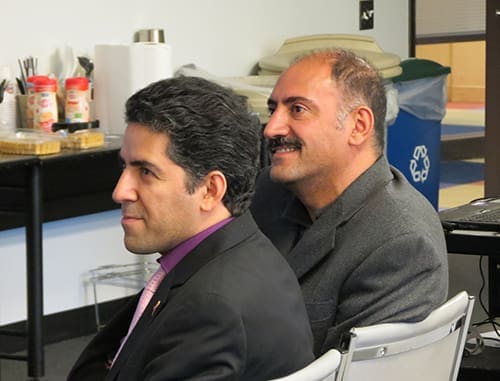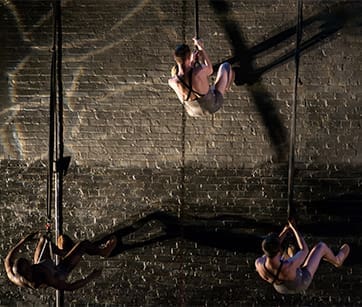Welcome to the second part of our film series, where we explore the portrayal of the HIV epidemic in cinema. In this installment, we delve into diverse films that touch on faith, family, and HIV in “Memories of a Penitent Heart” and celebrate the resilience of entertainers living with HIV in “Strike a Pose.”
6. Memories of a Penitent Heart (2016)
“Memories of a Penitent Heart” is a poignant film that explores the portrayal of HIV/AIDS and its intersection with faith and family. Filmmaker Cecilia Aldarondo embarks on a journey to uncover the untold story of her uncle, Miguel, who passed away during a time when HIV/AIDS was stigmatized and associated with sin. As she delves into her family’s past, the film unravels a buried conflict, shedding light on Miguel’s life, his struggle to reconcile his Catholic upbringing with his liberated sexuality, and living with HIV during in an era marked by fear and prejudice. The documentary serves as a heartfelt love story and a tribute to Miguel, offering a cautionary tale about the ways faith can both provide solace and be weaponized during times of crisis. Through the lens of one family’s experience, “Memories of a Penitent Heart” explores the broader themes of HIV/AIDS advocacy, acceptance, and the complex interplay between religion and the HIV/AIDS epidemic. It underscores the importance of understanding and empathy in addressing the challenges faced by individuals living with HIV, making it a compelling narrative in the evolving portrayal of HIV/AIDS in film and advocacy efforts.
7. Strike a Pose (2016)
“Strike a Pose” is a documentary that delves into the portrayal of HIV/AIDS in the entertainment industry and its connection to HIV/AIDS advocacy. The film profiles the dancers who performed with Madonna during her 1990 Blond Ambition World Tour, following their lives over a span of 25 years as they pursue careers in various artistic fields.
The documentary pays tribute to Gabriel Trupin, one of the original dancers who passed away due to AIDS-related complications in 1995. Through the stories of these dancers, “Strike a Pose” offers insights into the evolving depiction of HIV in entertainment and its profound impact on the lives of those affected by the virus. It serves as a testament to their resilience and commitment to both their art and HIV advocacy, highlighting the importance of empathy, awareness, and support of the HIV community.
8. Rent (2005)
“Rent” (2005) is a musical film that portrays the impact of HIV/AIDS on a group of friends in New York City during the late 1980s and early 1990s, shedding light on how HIV has been depicted in film and its connection to HIV advocacy.
The story revolves around Mark, a filmmaker, and Roger, a musician, who are struggling to pay rent while coping with the specter of AIDS. Their former roommate, Collins, who is HIV-positive, enters their lives along with Angel, another HIV-positive individual. As the group faces the challenges of living with HIV, they confront issues related to love, relationships, and loss.
The film portrays the characters’ experiences, including Roger’s fear of forming connections due to his HIV status, and Mimi’s battle with addiction and her own HIV-positive status. It also touches on the importance of support groups and advocacy, such as the Life Support group, in the HIV/AIDS community.
Throughout the film, the characters navigate the emotional and physical toll of the epidemic, culminating in the loss of Angel to AIDS and the challenges that arise from this tragedy. Despite their differences and conflicts, the friends ultimately come together to support each other and celebrate life.
“Rent” serves as both a portrayal of the HIV/AIDS crisis during that era and an advocacy piece, emphasizing the importance of living in the present (“no day but today”) and highlighting the resilience of those affected by HIV/AIDS.
9. The Normal Heart (2014)
“The Normal Heart” (2014) is a poignant film depicting the early years of the HIV/-AIDS crisis in New York City from 1981 to 1984. It portrays the confusion and fear surrounding HIV at its emergence. Mark Ruffalo’s character, Ned Weeks, co-founds the Gay Men’s Health Crisis (GMHC), emphasizing the vital role of advocacy in raising awareness about AIDS.
Julia Roberts plays Dr. Emma Brookner, who recognizes the disease’s pattern among gay men. The film highlights early challenges in understanding HIV medically. It also showcases the discrimination faced by those with HIV, from airlines refusing transportation to hospitals mistreating patients.
Personal narratives, like Ned’s lover Felix Turner’s (Matt Bomer), humanize the epidemic, conveying its devastating impact. “The Normal Heart” addresses the government’s initial reluctance to address HIV/AIDS seriously and underscores the grief and heartbreak within the community as friends and loved ones succumb to the disease.
Ultimately, the film serves as a historical account of the early HIV/AIDS crisis, highlighting activism, discrimination, personal stories, and the importance of advocacy and understanding to combat stigma and save lives.
10. The Ryan White Story (1989)
“The Ryan White Story” (1989) is a biographical drama that illuminates the challenges of living with AIDS during the early years of the epidemic. The film follows Ryan White, a teenager with hemophilia who contracts AIDS through tainted blood products. When his diagnosis becomes public, he encounters discrimination and is barred from attending school. To regain his right to education, Ryan and his mother enlist the help of a determined attorney, leading to a protracted legal battle involving multiple appeals. Eventually, Ryan is allowed to return to school under specific conditions, but he and his family continue to face prejudice and misunderstanding from their community.
Throughout the movie, “The Ryan White Story” highlights the pervasive fear and ignorance that surrounded HIV/AIDS in that era. The Whites’ unwavering advocacy efforts underscore the importance of education and fighting against discrimination and misinformation. The film concludes with Ryan’s mother finding a new home in a more accepting community, and Ryan embarking on high school with newfound acceptance and empathy from his peers, reflecting the growing awareness of HIV/AIDS.
This powerful biographical drama serves as a poignant reminder of the early struggles faced by those living with HIV/AIDS and the vital role of education and advocacy in dispelling myths and combatting discrimination related to the disease. Ryan White’s real-life story played a pivotal role in raising awareness about HIV/AIDS in the United States. The Ryan White CARE Act, the first major HIV-specific federal law and funding stream that today provides vital support for people living with HIV across America, was named after Ryan.
Join us next week for part 3 of the list of films in our Advocacy in Pop Culture series, where we continue to explore impactful films that have shaped perceptions of HIV and AIDS.




